The B1 visas and B2 visas are nonimmigrant (temporary) visas for foreign persons who are taking short trips to the United States for business and pleasure. The B1 visas and B2 visas are typically valid for 6 months and are usually used by persons who are attending business meetings and doing tourist activities or visiting family and friends during their time in the United States. It must be noted that in most cases, the person under the B1 visa and B2 visas cannot be employed to do any hands-on work in the United States.
Table of Contents
- 1.
- 2.
- 3.
- 4.
- 5.
- 6.
- 7.
- 8.
- a.
There are five main subcategories under the B visa:
- B1 visa [Business]: Persons who are visiting the United States to do business (typically attending business meetings) which does not include being employed and working in the United States.
- B2 visa [Pleasure]: Persons who are visiting the United States for pleasure which includes tourism, visiting family and friends, receiving U.S. medical services, and participating in social events (e.g., amateur entertainer performing for a charity event without being paid to).
- B1 & B2 visa [Business and Pleasure]: Persons who are visiting the United States to do business and for pleasure.
- B1 visa in Lieu of H1 visa or H3 visa [Business]: Persons who are customarily employed and paid by a foreign employer and are visiting the United States to provide professional services (H1 visa) or receive training (H3 visa).
- B1 visa for Personal or Domestic Employees [Servants]: Persons who work as personal or domestic employees (e.g., maids, housekeepers, chauffeurs, gardeners) for certain U.S. citizens or foreign persons who are on another nonimmigrant visa status in the United States.
A qualified person under the B1 visa and B2 visa must (1) have a valid reason (doing business or pleasure) to visit the United States, (2) will only be staying in the United States for a specific amount of time, (3) have a residence (home address) overseas that they do not intend to abandon, (4) have strong ties to their home country, and (5) have enough money for the stay in the United States.
No Immigrant Intent
The emphasis for a B1 visa and B2 visa is proving that the person does not have an immigrant intent, which means that the person must show that they do not have the intention to illegally stay in the United States beyond the amount of time granted to them. If the person applying for the B1 visa and B2 visa cannot prove that they intend to leave the United States, the B visa will be denied by the consular office with a presumption under the INA §214(b) that the person wants to immigrate to (i.e., stay permanently in) the United States.
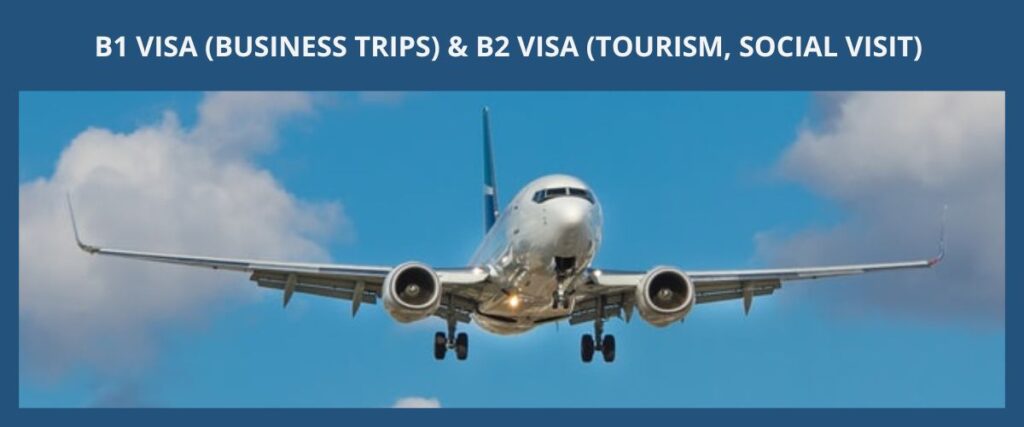
The B1 visa is for business activities and the B2 visa is for pleasure-related activities. The B1 visa and B2 visa can be combined if the trip to the United States consists of activities in both business and pleasure. Being employed to work in the United States is not allowed under the B1 visa and B2 visa, however, there are two main exceptions: (1) B1 visa in lieu of H1 visa or H3 visa and (2) B1 Visa for Personal and Domestic Employees.
Business Visits (B1 Visa)
Qualified business activities under the B1 visa must be (1) related to the person’s employment or business overseas, (2) related to international commercial transactions, and (3) it cannot be hands-on work or gainful employment in the United States (i.e., the person cannot be working or earning local U.S. income.)
Some general examples of business activities that are allowed under a B1 visa status include:
- Participating in commercial transactions that do not involve gainful employment in the United States (e.g., a person taking orders for products that will be manufactured overseas)
- Consulting with business associates (e.g., business meetings with U.S. clients)
- Litigation (i.e., handling lawsuits such as meeting with attorneys to discuss strategies and going to court but this cannot include any hands-on work done for the lawsuit such as doing investigations, retrieving physical documents, or writing briefs)
- Negotiating contracts
- Attending educational, scientific, professional or business conferences, conventions, seminars
- Undertaking independent research
Business activities can only be related to the B1 visa person’s employment or work overseas which means the person cannot be locally employed and paid to work in the United States (i.e., cannot earn income in the United States).
In most cases, the person under the B1 visa would be traveling to the United States for business meetings to discuss specific details of existing business deals or future business plans with business associates who can consist of employees under the same group of companies, potential or existing clients, vendors, and stake-holders in the United States. For example, it is permissible for a person to attend business meetings to gather information on how a computer part should be customized based on a contract with a U.S. company under the B1 visa whereas it is not permissible to be employed by a U.S. company as a sales agent selling a computer part in the United States under a B1 visa.
The person on a B1 visa must remain employed and on the payroll of their foreign employer and all the hands-on work (e.g., providing products or services) should be done overseas. Typically, all salary and wage must be paid overseas but U.S. companies can give the person under the B1 visa an expense account or reimbursement for the expenses related to the business trip.
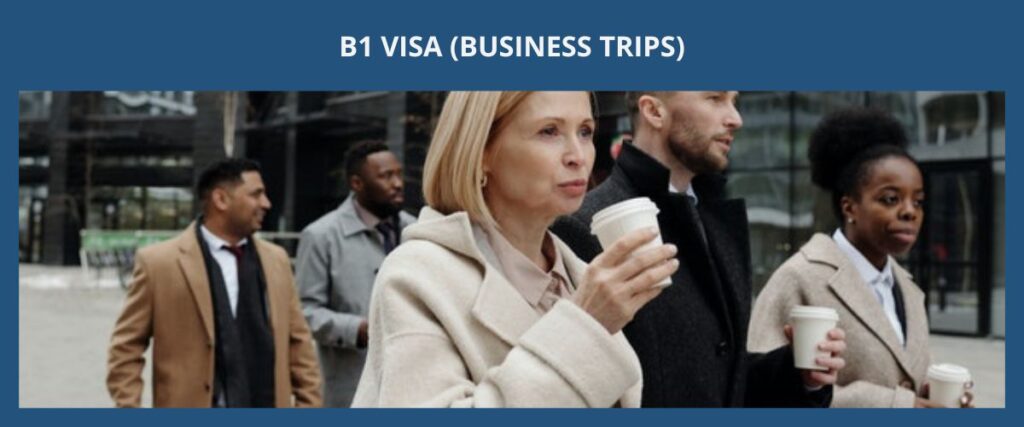
No Hands-On Working
In most cases, there cannot be any hands-on working under the B1 visa. For example, a person coming to the United States under the B1 visa for a construction-related project will not be allowed to do any building or construction work for the development themselves and is only allowed to supervise or train other people to do the building or construction work for the development.
Under the B1 visa, it is usually easier for senior-level managers and executives to show that they are only in the United States to provide guidance on resolving issues and will not be performing any hands-on work to resolve the issue themselves while in the United States due to their usual job duties. On the other hand, professionals who are usually under the supervision of executives and senior-level managers would need to provide more convincing evidence to show that they will not be doing any hands-on work (which is not allowed under the B1 visa) themselves in the United States.
Exception for Service and Repair
One exception to the no hands-on working requirement under the B1 visa would be the persons that are coming to the United States to service, install, or repair industrial commercial machinery (or equipment) that was purchased by a U.S. company from a foreign company overseas, or the persons who are coming to the United States to train U.S. workers on how to do those types of services. However, the service or training done under the B1 visa must be specifically required in the sales contract of the machinery (or equipment) and the person under the B1 visa must have the specialized knowledge to do such service or training. The business trip under the B1 visa must also be within 1 year of when the sale was made.
International Commercial Transactions
Commercial transactions under the B1 visa are activities done for making profits such as sales, purchases, marketing, advertising, solicitation, negotiations, distributions, transportation (for Canadians and Mexicans under NAFTA), or procurements.
In most cases, the profits made from the commercial transactions done under the B1 visa must ultimately and predominately be earned overseas. For example, a person taking orders (i.e., making sales) for custom-made business suits from clients in the United States sends the measurements and information back to their tailoring firm in the Hong Kong where the suits are made are and where the profits are earned is permitted under the B1 visa because it involves international commercial transactions and the ultimate profit will be made overseas.
In comparison, a person making sales of Christmas trees that are only sold in the United States will not be permitted under the B1 visa because the profits are earned only in the United States and there are no international commercial transactions involved in the sales of the Christmas trees in this scenario.
B1 visa in lieu of H1 visa or H3 visa (B1 in Lieu Visa)
The B1 visa in lieu of H1 visa or H3 visa is one of the exceptions of the B1 visa where the person can do hands-on work in the United States. The emphasis in a B1 visa in lieu of H1 visa or H3 visa is where the person is customarily employed and paid by a foreign company overseas. Please note this is not a commonly used visa category.
Qualified Person
A qualified person under the B1 visa in lieu of H1 visa or H3 visa must show that (1) they have been employed by the foreign company for a period of time (should at the minimum be for 1 month), (2) they are on the payroll of the overseas company (which can be a foreign branch of a U.S. company) and their salary or wage will continue to be paid by the foreign company throughout their time in the United States, and (3) the B1 visa person and the job position or training in the United States must meet the qualifications of the H1B visa or the H3 visa.
Income
The person cannot earn any income from a U.S. source which means that the U.S. company cannot ultimately pay the foreign company for the “B1 visa in lieu” person’s work or training. However, the U.S. company is allowed to give the person an expense allowance account or reimbursements for reasonable expenses incidental to the visit such as costs of lodging, meals, traveling, laundry, and other basic services. The exception for not earning income from a U.S. source is when there is an international group of companies that have a centralized payroll system located in the United States where all foreign employees overseas receive checks issued in the United States.
Situations When Used
The B1 visa in lieu of a H1 visa or H3 visa is more commonly used for persons who will be making multiple trips to the United States for a project or training program because CBP officers at the port of entry (e.g., the airport) typically questions a person who has a pattern of frequently using the B1 visa status to enter the United States if they are truly only doing business and not being employed to work in the United States. If a B1 visa person is denied entry into the United States because the CBP officer believes that they have engaged in longer term employment work in the United States, the person will have to disclose that denial on following applications for visas and admissions in the future.
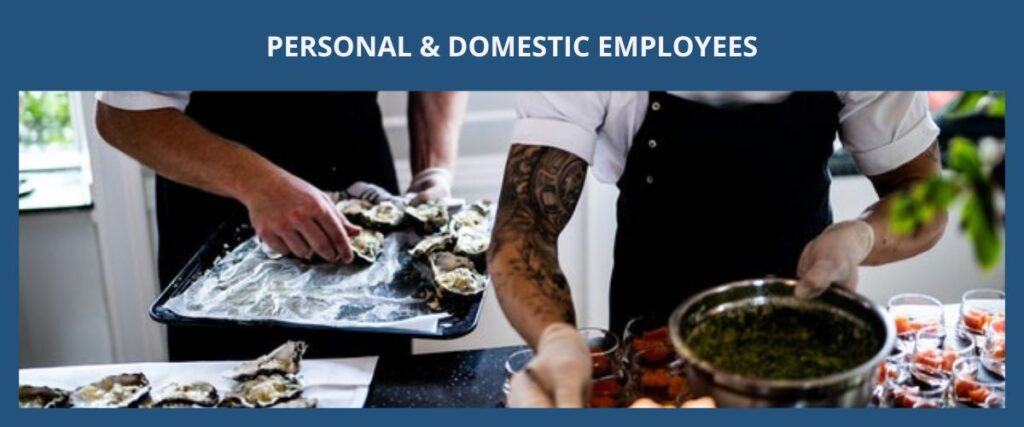
B1 Visa for Personal and Domestic Employees
The personal and domestic employees (servants) of certain U.S. citizen employers or foreign employers who are currently in the United States under a temporary nonimmigrant visa status (i.e., green card holders cannot be a foreign employer here) can come work for their employer in the United States under a B1 visa status.
Type of Personal and Domestic Employees
Personal and domestic employees under the B1 visa can include but are not limited to housekeepers, maids, butlers, chauffeurs, cooks, valets, footmen, nannies, au pairs, babysitters, caretakers, gardeners, and paid companions. An employment authorization document (EAD, Form I-765) must be filed for the personal and domestic employees under the B1 visa and an SSN should also be filed to withhold taxes after the person obtains their work authorization.
Income
Unlike most subcategories of the B1 visas, the salary and wage for the personal and domestic employees under the B1 visa can be paid from overseas or from within the United States (which means it does not matter what country the payment was made in or the location of the bank) but the employer and the B1 visa employee will be subjected to the U.S. tax and insurance obligations like other U.S. local employments.
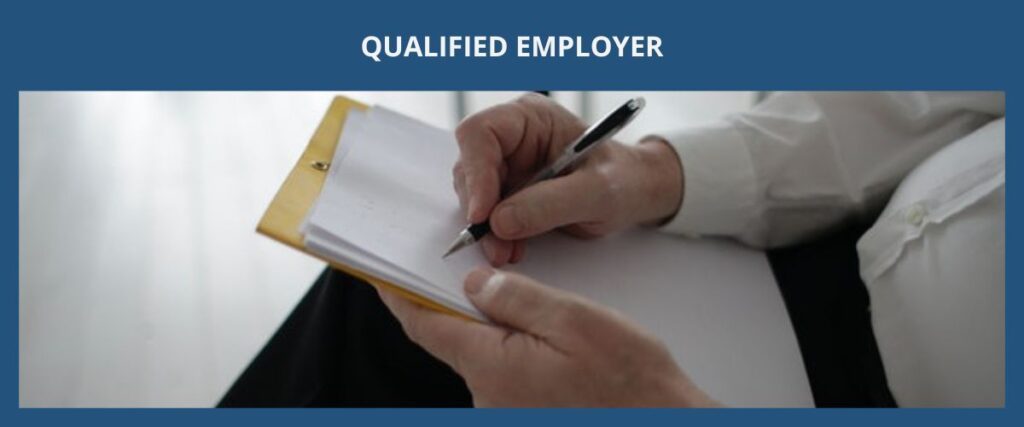
Employers for Personal and Domestic Employees
There are mainly 3 different types of employers under the B1 visas for personal and domestic employees and the U.S. consulates or embassy in different countries have different requirements for the B1 visa:
- Foreign Employer with U.S. Nonimmigrant Visa Status
- U.S. Citizen Employer Residing Overseas
- U.S. Citizen Employer Doing Temporary Assignments in the United States
Foreign Employer with U.S. Nonimmigrant Visa Status
For a foreign employer who is temporarily in United States with nonimmigrant visa status (e.g., E2 visa for investors, L1 visa for executives or managers), a qualified personal or domestic employee under the B1 visa must (1) have been employed overseas for at least 1 year before the foreign employer entered the United States or the employer must show that they regularly employ personal or domestic employees that works in the same capacity as the B1 visa employee and the B1 visa employee is already employed before the B1 visa petition, (2) have at least 1 year work experience of being a personal or domestic employee, and (3) have a residence overseas that they do not plan on abandoning.
U.S. Citizen Employer Residing Overseas
For a U.S. citizen employer who has a permanent home overseas or is stationed abroad, a qualified personal or domestic employee under the B1 visa must (1) have been employed for at least 1 year or the employer must show that they regularly employ a domestic servant that works in the same capacity as the B1 visa employee and the B1 visa employee must be already working for the U.S. citizen employer, (2) have at least 1 year work experience of being a personal or domestic employee, and (3) have a residence overseas that they do not plan on abandoning. In most cases under this scenario, the U.S. citizen employer would only be doing temporary short visits to the United States such as for vacations or short business trips.
U.S. Citizen Employer Doing Temporary Assignments in the United States
For a U.S. citizen employer who is subject to frequent international transfers that last 2 years or more as a condition of their job (and they cannot return to the United States for a period longer than 6 years), a qualified personal or domestic employee under the B1 visa must (1) have been employed for at least 6 months or the employer must show that they regularly employ a domestic servant (not for personal employees such as a personal assistant) that works in the same capacity as the B1 visa employee and the B1 visa employee must already be working for the U.S. citizen employer, (2) have at least 1 year work experience of being a personal or domestic employee, and (3) have a residence overseas that they do not plan on abandoning.
If there is difficulty obtaining a personal and domestic employee B1 visa for au pairs or persons who are young and unmarried, the alternative is to file for a single use B1 visa with a limited duration or posting of an immigration bond (unusual).
*Regular employment is seasonal or year-round employment over a period of several years.
Other Activities Allowed Under B1 Visas
Other than the general business meetings, there are other types of persons and activities that are allowed under the B1 visa which include but are not limited to:
- Visiting university lecturer (who will be attending or speaking at an educational, scientific, professional or business seminar, conference, or convention with Honorarium)
- Ministers of religion or missionaries
- Employment involving an international fair or expositions
- Professional artists who are participating in an international competition or a cultural program sponsored by a foreign country, photographing in the United States, using recording facilities to record music that will not be distributed or sold in the United States, or creating art (such as painting or sculptors) that are not intended to be sold regularly in the United States and am not under contract with a U.S. employer
- Professional athletes attending tournaments
- Members of the board of directors of a U.S. company attending a board meeting
- Commercial truck drivers doing international hauling
- Tour bus operators
- Crewmen of private yachts or private aircrafts
- Horse racing personnel (e.g., jockeys, sulky drivers, trainers, groomers of horses)
- United Nations interns or affiliated persons
- Medical doctors coming to the United States to observe medical practices and consult with other doctors on the medical techniques
Pleasure Visits (B2 Visa)
The B2 visas are typically for persons who are visiting the United States for reasons of pleasure such as tourism, rest, visiting family and friends, medical treatments, and attending social events such as conferences, conventions, convocations.
Some examples of activities or types of persons that are allowed under B2 visas:
- Tourism
- Cohabitating partner of foreign persons who are in the United States under another nonimmigrant visa status (e.g., long-term romantic relationship significant other, common-law spouse, domestic or same-sex partner, concubine)
- Extended family members of foreign persons who are in the United States under another nonimmigrant visa status (usually elderly parents who are financially dependent, needs care, and has lived with the foreign person for a long time)
- Household members of foreign persons who are in the United States under another nonimmigrant visa status (e.g., concubine of the foreign person if concubinage is legally recognized in their home country)
- Amateur entertainers and amateur athletes who are performing for a charitable or nonprofit event without pay in the United States (i.e., amateur means that they cannot normally get paid for their performances and they cannot be paid for their performance in the United States however they can be reimbursed for incidental expenses)
- Short courses only if it is recreational or avocational such as a short cooking class or art class for the person’s hobbies
- In limited circumstances when the person’s primary purposes are to accompany a principal foreign person in the United States, such as a minor child coming to the United States to be with their parent who is holding a B1 in lieu of H1 visa status
The B1 and B2 visas are usually granted an initial period of stay for up to 6 months (or 1 year in some cases) and renewals (extensions of stay) can be granted in 6-month increments. It is usually difficult to extend B2 visas for more than 1 year unless the person is receiving medical treatments or is accompanying a foreign person who is employed in the United States under another nonimmigrant visa status.
-eng-1024x427.jpg)
The B1 visa and B2 visas have five main requirements that need to be satisfied: evidence must be provided to the U.S. consulate or embassy to show that the person (1) has a valid reason (doing business or pleasure) to visit the United States, (2) will only be staying in the United States for a specific amount of time, (3) has a residence (home address) overseas that they do not intend to abandon, (4) has strong ties to their home country, and (5) has enough money for the stay in the United States.
For B1 visas, the person would also need to show that the business activities are (1) related to the employment or business overseas, (2) related to international commercial transactions, and (3) it is not hands-on work or gainful employment in the United States (i.e., the person cannot be working or earning local U.S. income.)
For B2 visas, the person would also need to show that the activities will truly be for pleasure such as tourism, rest, visiting family and friends, medical treatments, and attending social events such as conferences, conventions, convocations.
*Additional requirements and documents are needed for other subcategories under the B1 visas and B2 visas.
Documents Required for the B1 Visa and B2 Visa (Business and Pleasure)
Evidence that shows that the person has a residence overseas that they do not intend on abandoning and that they have strong ties to their home country can include but is not limited to:
- Leases or deeds of the physical residence overseas
- Letters that confirm employment overseas
- Documents that show ownership of assets or businesses
- Documents that show involvement in communities in home country or participation in business associations
- Documents that show family ties in home country (e.g., marriage certificates, birth certificates of children, photos)
Evidence that shows that the person has sufficient financial funds for their stay in the United States can include but is not limited to:
- Bank statements
- Tax returns
- Paystubs
- Salary that will be provided by their foreign employer or reimbursement for expenses of the business visit from the U.S. company
- Affidavit of support (Form I-134) from a sponsoring family member, friend, or other interested parties who lives in the United States

Documents Required for the B1 Visa (Business)
Evidence that shows that there is a foreign employer can include but is not limited to:
- Business formation documents (e.g., Articles of Incorporation, business licenses)
- Lease or deeds of the foreign employer’s physical premises
- Corporate tax returns
- Payroll records
- Contracts of the services or goods provided
- Website print-out
Evidence that shows profits will ultimately and predominantly be earned overseas can include but is not limited to:
- Documents that show payment based on contracts
- Payroll records of the B1 visa person’s salary, wage, and commissions
- B1 visa person’s job description (that should show the business activities in the United States are only a small part of the person’s overall job duties)
Evidence that shows international commercial transactions can include but is not limited to:
- Business plans (should include details of the planned activities in the United States and how the activities are necessary and involves international commercial transactions related to the foreign company’s operations)
- Contracts of the services or goods provided, or transportation of goods crossing international borders
- Overseas sales or purchases made by the U.S. company
Evidence that shows hands-on work will be done overseas and not in the United States can include but is not limited to:
- Contracts of the services or goods provided (should show the work for the services or goods done will be overseas)
- Organizational charts (should show the B1 visa person and the employees who will be doing the hands-on work overseas)
- Documents that show there is not enough tools, resources, or technologies at a U.S. worksite
Evidence that shows the negotiation of contracts can include but is not limited to:
- Documents that show communications for the business deal between the U.S. company and the foreign company (e.g., emails or phone calls)
- Information on the product or service provided by the foreign company
- Information on the U.S. company and why they need the foreign company’s products or services
- Documents that show the B1 visa person is employed and has the authority to negotiate contracts for the foreign company
If the person is self-employed as a freelancer, additional evidence should include but is not limited to:
- Past contracts with other clients
- Documents that show the products or services in past contracts were all done outside the United States (e.g., bills of lading, payroll records, communication with past clients regarding the delivery of products or services)
- Corporate and personal tax returns
Evidence to show that the person is in the United States for investments can include but is not limited to:
- Contracts
- Shareholder registrations and stock ownership ledgers
- Bank statements, wire transfers
- Portfolios
Evidence to show that the person is in the United States to deal with a litigation related to the business can include but is not limited to:
- Retainer contract
- Docketing calendars
- Legal briefs
- Subpoena notices as a witness
- Contracts as an expert witness
- Communications regarding the litigation (e.g., emails, letters, faxes, phone call logs)
- Documents that show the person is representing their employer or is themselves the plaintiff or defendant of the lawsuit
- Documents that show the person is an attorney involved in the litigation (e.g., the group of companies has in-house attorneys only overseas)
Evidence to show that the person is in the United States to attend conferences, meetings, or conventions on specific dates can include but is not limited to:
- Detailed itinerary and agendas for the events
- Payment confirmation for the events
- Verification of the presentation of a professional speech, article, scholarly activity, or product showcases (however physical demonstration of the product may not be allowed)
- Business plans (should include how it is related to the foreign company’s overall business goals)
Evidence to show that the person is undertaking independent research can include but is not limited to:
- Documents that show the independent research project (should include the ultimate goal of the research project, the research already done overseas, the documents and information that need to be gathered in the United States, why the research must be done in the United States and whether it is related to a business plan, academic degree program, or professional activity)
Evidence that shows the B1 visa person is coming to the United States to train, install, service, or repair machinery or equipment that the U.S. company bought overseas can include but is not limited to:
- Contract (should include provisions that require the foreign seller to provide such services or training)
- Documents that show the B1 visa person’s educational qualifications and work experience (e.g., degrees, resumes, certificates)
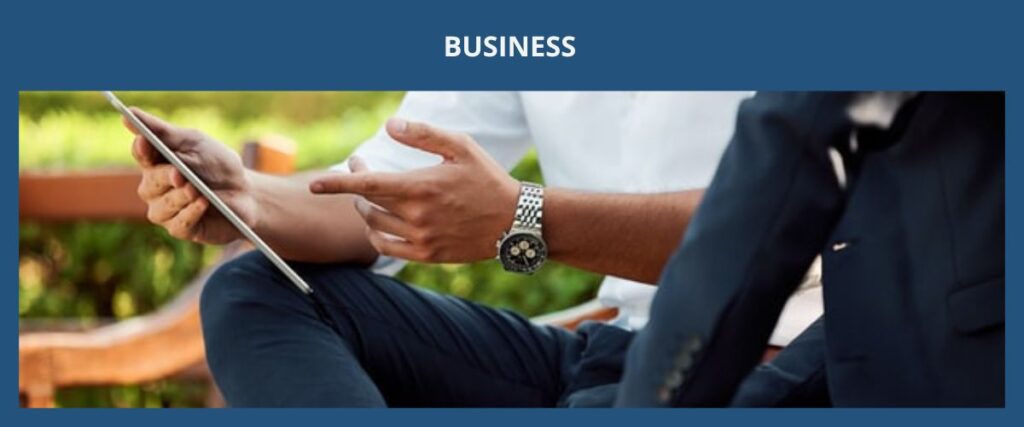
Documents Required for the B1 Visa for Personal or Domestic Employees (Servants)
Evidence that shows the B1 visa person is coming to the United States to work as a personal or domestic employee for their employer can include but is not limited to:
- Contracts (that include certain stipulations of the employment conditions such as the salary provided is at least the minimum or prevailing wage whichever is higher, the benefits usually required for U.S. domestic workers in that area of employment are given, the employer is required to give a 2-week notice of intent to terminate employment, the employee is not required to give more than a 2-week notice to resign, or the foreign employer will pay round-trip expenses for the employee, or the foreign employer will provide free room and board)
- Documents that show the B1 visa person has at least 1 year of work experience as a personal or domestic employee (e.g., letters from current or past employers)
- Documents that show the B1 visa personal or domestic employee has a residence overseas (home address) that they do not intend to abandon (e.g., leases, deeds)
- Documents that show the U.S. citizen has residence overseas (e.g., leases, deeds)
- Pay stubs, bank statements
- Documents that show the employer regularly employs an employee in the same role of the B1 visa person (e.g., pay stubs, employment contracts, bank statements, canceled checks, job advertisements, staffing agencies or recruiter statements)
- Statement from the employer of the U.S. citizen employer on their frequent international transfer that is a part of their employment contract
- The U.S. citizen employer’s work visas and work permits from other countries, or employment contracts for their international assignments

Documents Required for the B2 Visa (Pleasure)
Evidence that shows the B2 visa person is coming to the United States for reasons such as tourism, rest, visiting family and friends, medical treatments, and attending social events can include but is not limited to:
- Itineraries, purchase receipts, and brochures of tourism activities
- Communication of invitations from relatives or friends in the United States
- Agendas, press releases, programs of social events
- Documents that show the medical diagnosis of the B2 visa person and communications from the U.S. healthcare provider with details of the cost and projected time needed for the medical treatment in the United States
- Documents that show the B2 visa person is financially able to pay for the stay in the United States (e.g., bank statements, certified income tax returns)
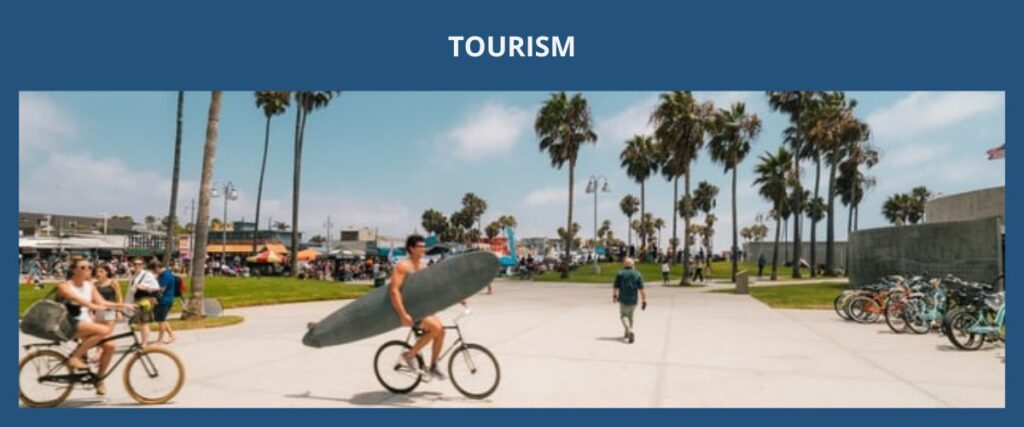
The processing time for the B1 visa and B2 visa application (DS-160) depends on the caseload of the U.S. consulate or embassy overseas and varies in different countries.
B1 Visa and B2 Visa General Process
There are 3 main steps in the general process of obtaining a B1 Visa and B2 Visa:
Step 1: Filing the B1 Visa and B2 Visa Application (DS-160)
The person must file a B1 visa and B2 visa application and schedule an interview appointment with the U.S. consulate or embassy (usually in their home country but can be in a third country under limited circumstances).
Step 2: Consular Interview
The person must attend the in-person interview at the U.S. consulate or embassy. The person would need to concisely explain their reasons to visit the United States and why they will not overstay their time in the United States.
Step 3: CBP Inspection
After the B1 visa and B2 visa is approved by the U.S. consulate or embassy, the person must be admitted to the United States by the CBP officer at the border (usually at the airport) which means that the person has to physically enter the United States for the B1 visa and B2 visa status to be activated.
Change of Status
The B1 visa and B2 visas allows the person to change into another nonimmigrant visa status (e.g., F-1 student visa, H1B work visa) while in the United States if the person maintained a lawful visa status throughout their time in the United States. However, a change of status from a B1 visa and B2 visa must be done cautiously because the person can be easily seen as having misrepresented their true intentions when they applied for their B1 visa and B2 visa.
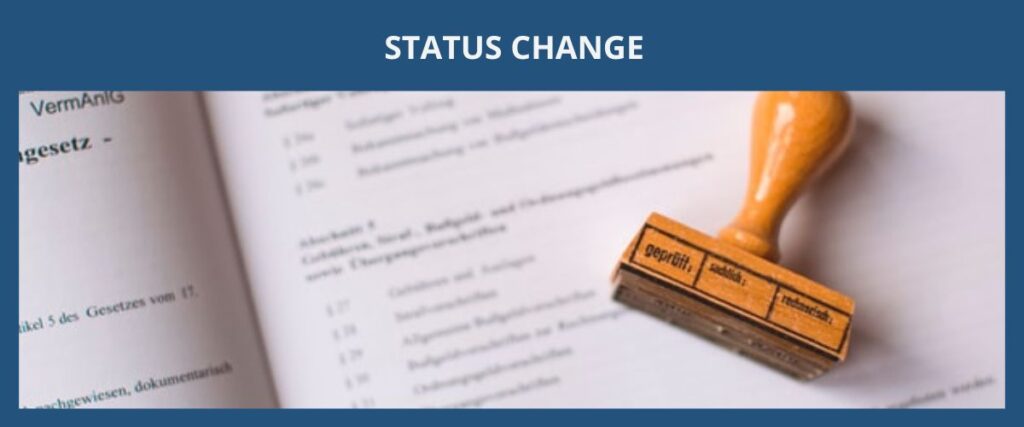
Dual intent visas allow the foreign person to have both an intent to temporarily stay in the United States and an intent to permanently stay in the United States. The intention to permanently stay in the United States can be shown when the foreign person has a pending green card petition with the USCIS or an approved PERM labor certification from the U.S. Department of Labor.
The B1 visas and B2 visas are not dual intent visas and the foreign person is required to have a residence overseas that they do not intend to abandon.
Troubles With Showing Dual Intent Under B1 Visa & B2 Visa
Under B1 visas and B2 visas, the foreign person is not allowed to have the intention of staying permanently in the United States which means that having a pending green card petition will interfere (does not mean outright denial) with their eligibility to maintain and extend (or renew) their B1 visa and B2 visa status in the United States or their applications for future nonimmigrant visas.
For example, if a B1 visa and B2 visa holder leaves the United States after they have filed a green card petition (which is an intention of permanently staying in the United States) with the USCIS, it would be likely that they will not be allowed to back to the United States with their B1 visa and B2 visa because the B1 visa and B2 visa is not a dual intent visa and only allows the foreign person to have an intention to temporarily stay in the United States.
Or in another example, a person who has a pending family-based green card petition is likely to face difficulties applying for a B2 visa to visit a friend in the United States because the U.S. consulate officer may not be easily persuaded that they will not overstay in the United States.
The B1 visas are usually for persons who are coming to the United States for business meetings and the B2 visas are usually for persons who are vacationing as tourists in the United States or visiting family and friends living in the United States. The B1 visa and the B2 visa can be combined where the person can do business activities and social activities during the same trip to the United States. The alternatives to B1 visas would be persons who qualify for the Visa Waiver Program or Canadians and Mexicans under the NAFTA agreement.
If you have a B1 visa & B2 visa (Business and Tourism Visa) immigration question, please fill out our contact us form or send us an email with some basic information about your background and your immigration needs. We will do our best to respond within 48 hours.
How we can help?
Kylie Huang Law’s immigration attorney will help identify whether the B1 visa & B2 visa is the appropriate nonimmigrant visa category for the client (or the client’s beneficiary) and if there are other visa options for the client (or the client’s beneficiary). We will work closely with our client to prepare a convincing case for their (or it’s) B1 visa & B2 visa application and we will also strategize on how the B1 visa & B2 visa application should be presented to achieve the best chances of approval. It is strongly advised to retain an immigration attorney for unusual B1 visa & B2 visa applications due to the complexities in the visa application process and visa requirements.
What does the typical process look like to retain (hire) us?
- Step 1:
- Step 2:
- Step 3:
- Step 4:
- Step 5:
- a.
- b.
- c.
- Step 6:
- Step 7:
- Step 8:
- Fill out the form (with some basic information on what your immigration needs are)
- Sign up and log into the client portal to schedule an appointment online
- Attend scheduled appointment (typically a phone call or zoom meeting)
- Retainment (signing a contract to hire us)
- Start processing case
- Gathering required documents
- Preparing paperwork
- Confirming contents of documents that will be submitted
- Filing the case
- Following up on the status of the case
- Close the case when a final determination is issued
- Step 1:
- Step 2:
- Step 3:
- Step 4:
- Step 5:
- a.
- b.
- c.
- Step 6:
- Step 7:
- Step 8:
- Fill out the form (on what your immigration needs are)
- Sign up and log into the client portal to schedule an appointment
- Attend scheduled appointment (typically a phone call or zoom)
- Retainment (signing a contract to hire us)
- Start processing case
- Gathering required documents
- Preparing paperwork
- Confirming contents of documents that will be submitted
- Filing the case
- Following up on the status of the case
- Close the case when a final determination is issued
- Step 1:
- Step 2:
- Step 3:
- Step 4:
- Step 5:
- a.
- b.
- c.
- Step 6:
- Step 7:
- Step 8:
- Fill out the form (on what your immigration needs are)
- Sign up and log into the client portal to schedule appointment
- Attend scheduled appointment (typically a phone call or zoom)
- Retainment (hire us)
- Start processing case
- Gathering required documents
- Preparing paperwork
- Confirming content of documents that will be submitted
- Filing the case
- Following up on the case status
- Close the case when a final determination is issued

